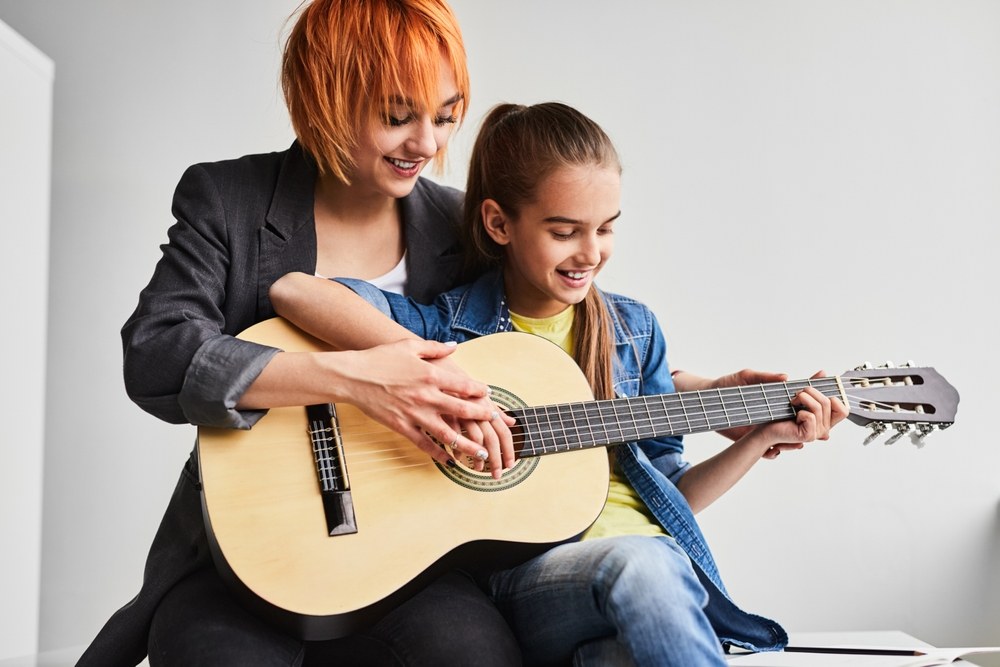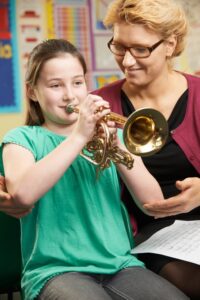This blog is inspired by Brian Schappals, a Seattle Lessons In Your Home teacher.
If your student is currently borrowing a woodwind or brass instrument for orchestra and band lessons at school and wants to have their own, or if they are looking to upgrade to a higher quality instrument, it’s crucial to take them to a music store to test out some options that are suitable for their skill level. When you and your student feel that it’s time for a new instrument for their woodwind and brass lessons, follow the tips below to find the perfect instrument!
If your student is having trouble deciding which instrument to start with, check out how to pick the right instrument for your child.

Instruments Can Be Costly
The price of instruments can hit hard, especially depending on the instrument you choose. To ensure that you’re making a wise investment, take your time when trying out potential instruments. If your student has never played a particular instrument before, it’s important to consult your Lessons In Your Home music instructor before heading to the instrument shop. They are highly knowledgeable about beginner-level instruments and can recommend great brands and models for your student’s lessons.
Find a Reputable Music Store
Finding a reputable music store is the first step in finding a fantastic new instrument for your student. If you haven’t already, check out your town’s prominent music store. Here are some qualities to look for:
- Explore the store’s website to learn about their inventory and staff.
- Consult your teacher for their opinion on a specific music store. They have experience visiting various stores and can provide valuable insights.
- Read reviews about the store from your community. You can search for online reviews, ask local musicians, or talk to your school’s music director.
- If possible, visit the stores in person. This allows you to meet the staff and see their inventory. Look for a store with friendly and helpful staff, as well as a wide selection of instruments and accessories.
- Check if the store offers repair services. This is a convenient feature to have in your chosen music store.
Seattle music students enrolled in music lessons have access to several excellent local music stores, including:
- Ted Brown Music
- Kennelly Keys
- Metropolitan Music
Inquire About Sanitary Policies Before Trying
The coronavirus pandemic has changed the way many businesses operate. Before visiting a music store to test an instrument, make sure to ask about their sanitation and instrument trial policies to prioritize the safety of yourself and your student during their woodwind and brass lessons. If a store currently doesn’t allow instrument trials, discuss it with your Lessons In Your Home instructor and ask for their recommendations regarding brands, models, and next steps. While at the store, ensure that the mouthpiece is sanitized with a mouthpiece sanitizer solution before your student plays it, or bring your own solution. Reed musicians should bring their own reed as well. Don’t hesitate to ask the store any questions regarding their sanitation and trial policies.
Ensure It’s the Right Fit for You
This step is the most important one. It’s where your student determines if they like the new or used instrument or if they want to continue testing. Here’s what I advise my students to do when trying an instrument. This process should take about 8 to 10 minutes for a thorough evaluation:
- Begin by playing a few random notes to get a basic sense of the instrument’s feel.
- Play every note you know from the bottom to the top. Pay attention to how it feels. Is it difficult to produce sound? Do you like the sound?
- Test the instrument at different dynamics. How well does it handle playing softly or loudly?
- Experiment with different articulations—staccatos, legatos, accents, and slurs. Notice how each feels.
- The following tip is for intermediate to advanced players: Only do this step after playing and warming up the instrument for about 5 minutes! Once warmed up, use a tuner to tune your regular tuning note and adjust the instrument accordingly. Then, play every single note again and observe the tuner’s response to each one. It’s rare for an instrument to have perfect intonation, but if you notice that every note except your tuned note is 15 to 20 cents off, that’s not ideal. Ideally, most notes should be nearly in tune, with only slight variations of 5 to 10 cents away from the center. It’s normal to have a couple of anomalies, but not too many.
- Finally, play something you have been practicing or can play well. The above tips warm up your understanding of the new instrument. This is the best way to determine if your student is truly benefiting from the new instrument.
Once your student completes this checklist, ask them the essential question: How does it compare to what you already use? If they notice a significant improvement, the instrument is right for them! If the difference is minimal, it may not be worth the investment. If your student doesn’t own an instrument yet, buying one in this scenario can be justified. Consider whether the purchase is worth it to you and your student. Remember, everyone’s answer will be different, and it’s perfectly fine if you’re not ready to make a purchase right away. Trying out different instruments provides valuable learning experiences. If you feel ready after considering everything you’ve read, go for it! Enjoy the process and have fun!
Are you looking for lessons in the convenience of home? Connect with Lessons In Your Home teachers today.
